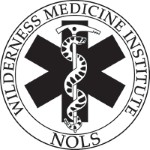College students heed emergency calls
Observer-Dispatch
CLINTON — When government major Gabe Tash goes to class at Hamilton College, he not only brings his backpack of books and supplies, he also carries his pager and "jump bag."
The bag contains Tash's stethoscope, blood-pressure cuff and other basic first-aid and emergency-response gear. The Chicago native, 23, is one of 19 students who make up the Hamilton College Emergency Medical Service.
Most of the calls Tash has responded to include common cuts and bruises, but he has had a couple of strange requests.
"One time someone said they had a stomachache and asked if I had any Tums," Tash recalled. "One time I went to a girl's room. She was there with her boyfriend and they asked for the morning-after pill. I had to explain that we just didn't carry that kind of thing around with us."
But no matter what the call or who is involved, Tash said the service is adamant about maintaining students' rights to confidentiality.
"It's interesting to respond to calls in a community where you pretty much know everyone," said Richard Deitchman, 19, also a member of Hamilton's emergency-medical service. "We do a good job at maintaining full confidentiality of whatever happens. We're different from other services in that way."
Hamilton College Emergency Medical Service is a first-response, non-transport, state-certified agency. All it lacks is an ambulance to transport patients to the hospital.
"All the EMTs on campus are students, and they're all certified as basic EMTs with the state," Service Coordinator Diann Lynch said. Lynch is a registered nurse with the college's Thomas B. Rudd Health Center and also is a certified EMT.
"Most of them take the certification class the second semester of their freshman year," she said. "They don't get college credit for the course, but they are taught by the Faxton-St. Luke's Healthcare EMS Program Agency."
Students begin the EMT certification course in mid-January and it runs through mid-May. Each student must complete a semester of two three-hour lectures on evenings during the week, and 4-to-6-hour labs on Saturdays. When they finish, they take the EMT certification test.
The student EMTs are not paid for their services. The group currently has 19 members: 13 men and six women. Twelve candidates selected through an interview process have already been chosen for the spring course, Lynch said.
"We try to keep it equal. We like to have at least one female on call for the night shift," she said.
Lynch said the EMT service consists of students majoring in fields as diverse as government and English.
"There's the misconception that we're made up of all pre-med students, and that's not the case at all," she said. "Some are varsity athletes and others belong to different groups or clubs on campus."
Committed to community
Having a student EMT service is unique in the Mohawk Valley, but some other colleges and universities in the state have the service, said Eric Loucks, educator with Midstate EMS Region Faxton-St. Luke's Healthcare EMS Education program.
"Most medical schools have their own (student) EMT service," Loucks said. "They have their own EMS because it's a way the students can get good experience."
Anyone with a medical emergency on campus can dial 911 for help. The call goes to the campus Safety Office, which dispatches the student EMTs. There are at least three students on call 24 hours a day, 7 days a week, and they typically respond within three minutes to a call, Lynch said.
"They respond to assess the emergency, and if it's something they can treat or something they can advise a student to go to the hospital for, then they will do so," Lynch said.
If the emergency is serious, the students will contact the Oneida County 911 Center to send an ambulance. Usually those calls are routed to Central Oneida County Volunteer Ambulance Corp., but if its units are busy, then calls are sent to Edwards Ambulance Co.
"The commitment demands the students are on call about 30 hours a week, and they can't leave campus during that time," Lynch said.
Two members of the Hamilton College Emergency Medical Service also ride with Central Oneida. "We have a pretty good working relationship with them," said Tash, who also rides with the service when he's not volunteering on campus.
Tash is the equipment officer for the student EMS during the 2005-06 academic year. It's his job to keep track of all the medical equipment used by service members. All equipment, plus uniforms for each member, are supplied by the

